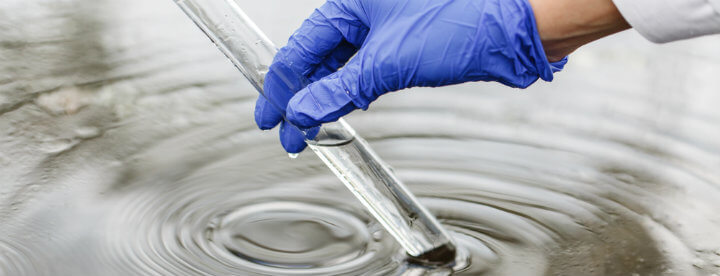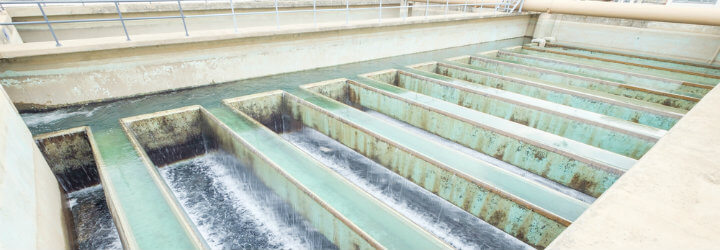How to Remove TCP from Water – 1, 2, 3 Trichloropropane
Written by AOS Treatment Solutions on December 18, 2018

Access to clean water is a critical factor that affects the overall health of citizens in any part of the world. For water to be termed ‘clean,’ it must be free from toxic chemicals and substances and harmful pathogens that could make supply unsafe for human consumption.
A significant water pollutant is 1,2,3-Trichloropropane or 1,2,3-TCP. TCP became a pollutant of interest to the U.S. Environmental Protection Agency (EPA) and other environmental regulatory bodies after research found a correlation between vast amounts of the compound in public water supplies and chronic health problems in humans.
What Is 1,2,3-TCP?
1,2,3-Trichloropropane is a colorless or straw-colored chemical compound which is slightly soluble in water and produced by the chlorination of propylene or the addition of chlorine to certain organic and inorganic compounds. TCP is a man-made pollutant that can be found at industrial and hazardous waste sites.
How Did TCP Originate?
According to findings by the EPA, Trichloropropane originated as an impurity in soil fumigants manufactured by prominent American chemical industries in the 1980s. These fumigants were used to prevent parasitic organisms from affecting crop yield in the Great Central Valley of California. However, the chemical leached through the soil into groundwater and eventually contaminated public water supplies. Since then, there have been reports of cancer-related deaths in states where TCP was found in public water supplies.
What Was TCP Originally Used for?
Historically, TCP chemical was used as an industrial solvent, a cleaning/degreasing agent, and as an intermediate for producing other chemical compounds. Nowadays, TCP is a prohibited substance due to significant health hazards in humans after being discovered in large concentrations in public water supplies.
Dangers of TCP Chemical
1,2,3-TCP is a significant groundwater pollutant which is ‘likely to be carcinogenic’ at a certain dosage according to the EPA. As a result, many states have recognized it as a harmful pollutant and begun to develop local regulations to eliminate the chemical from their public supplies.
Trichloropropane is harmful to humans when inhaled, contacted, or ingested. An acute (instantaneous) exposure to Trichloropropane is known to irritate the throat and eyes and impair muscle coordination and memory, while chronic exposure may cause certain types of cancer and kidney failure.
A 2017 report by California State Water Resources Control Board found TCP in 395 of 5,863 of public wells tested.
What States Have TCP in Water?
There are several states where TCP has leached into public water supplies. Findings by the EPA indicate varying levels of TCP concentration in groundwater in at least 17 states including California, Hawaii, and New Jersey. Currently, California is the state with the most stringent regulations on TCP content in water.
Regulations for TCP Contamination
Both the U.S. Environmental Protection Agency (EPA) and NIOSH (National Institute for Occupational Safety and Health) have classified TCP as a likely carcinogenic substance.
In 2017, the Water Resources Control Board of the state of California established the maximum containment level (MCL) of TCP in water as 0.005 μg/L (5 parts per trillion) for utility companies, with compliance starting in January 2018. Hawaii has also specified MCL of 0.6 µg/L (600 parts per trillion). Other states set to develop similar regulations to safeguard public supplies. These regulations are cause for high-performance groundwater remediation solutions.

How to Remove TCP from Water
Groundwater is essential both for public consumption and as a raw material for many industries. However, it is quite difficult to remove TCP from water because it is denser than the liquid. The chemical is also not easily degradable, allowing it to remain in the water for a long time.
Fortunately, research has yielded several methods for TCP removal including:
- Reductive dechlorination
- TCP remediation techniques with pump and treat, on-site chemical oxidation etc.
- Use of adsorbents for TCP removal (TCP removal with Granular activated carbon (GAC) systems)
- Anaerobic reductive dechlorination of TCP
- Chemical oxidation of TCP with Fenton’s reagent
Of particular interest is the use of Granular Activated Carbon (GAC) to eliminate 1,2,3 TCP in water. GAC is an adsorbent material made of porous materials like coal, lignite, and wood. The large surface area and high porosity of the substance make it ideal for separating organic pollutants like TCP from water.
Cost Considerations
Some of the TCP treatment methods listed above could be costly due to investment in specialized chemicals, equipment, and manpower. Industrial and municipal users are often faced with the challenge of obtaining high-quality treatment and consultancy for treatment plant design and compliance with local water regulations.
AOS Treatment Solutions offer low-cost municipal and industrial water treatment and consultancy services throughout the U.S.
AOSTS experts provide water analysis services to determine water quality and the best treatment methods for your needs.
To speak with a consultant, please call (936) 228-6539 or contact AOS online today.

